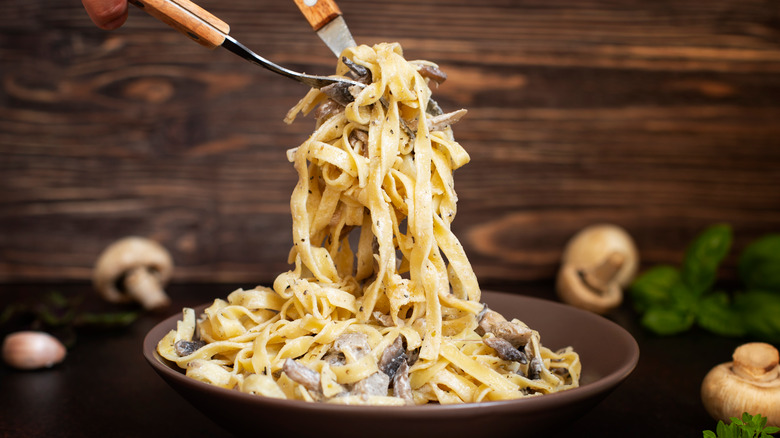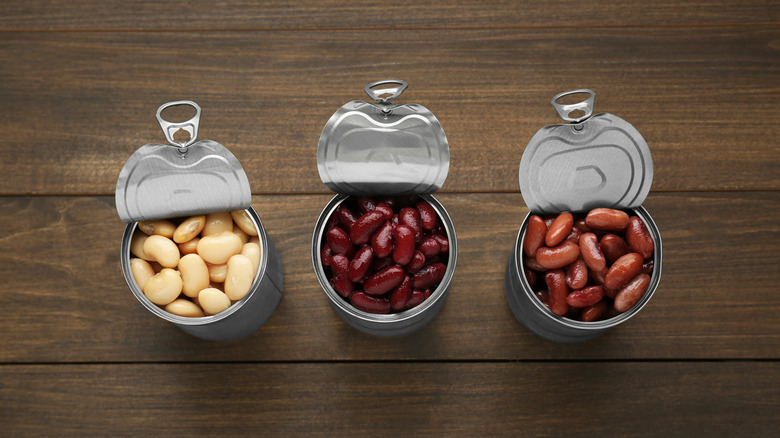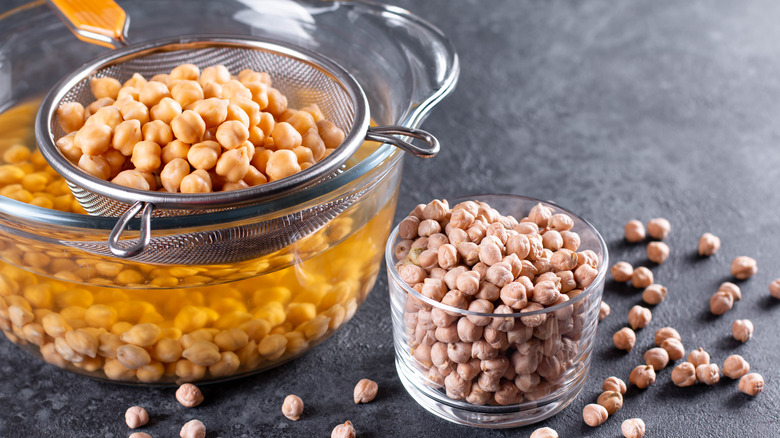Bean Broth Is The Unexpected Answer For The Creamiest Dairy-Free Pasta
Pasta has many flavorful companions, from three-ingredient white wine pasta sauce to traditional Bolognese, creamy tomato, or Alfredo. While the variety of possible combinations is expansive, many people find particular joy in the luxurious combination of a cream-based sauce with starchy noodles. However, for those avoiding dairy, it can be disheartening to give up on this idyllic comfort food.
The good news is, you don't have to. It's easy to create a rich and filling pasta dish without the go-to cream, milk, and cheese that constitute most creamy sauces. Instead of reaching into the fridge for dairy, head to the pantry instead. Inside you'll likely find an unexpected ingredient that will serve your creamy pasta well — bean broth. No, it doesn't come in a jug, lined up next to beef, chicken, or vegetable broth. But yes, it is easy to make or source from your canned goods. So whether you have dairy-free dietary restrictions or just need a quick fix for a weeknight dinner, beans are the answer to your creamy pasta cravings.
Use bean broth to your advantage
Before you dump the pot after boiling beans or dispose of the liquid in your canned beans, start a new habit of giving that broth a second life. You can use the broth in two ways when making pasta. The first is to add bean broth to the pasta sauce as a replacement for other liquids. The second is to actually boil the noodles in the bean broth.
If you only have broth from a can or two of beans, you might want to save it to use directly in the sauce. On the other hand, if you have an excess of bean broth water left after boiling beans for your favorite white bean soup recipe, add water to increase the volume to the amount you need to boil your pasta. Depending on how well-seasoned your bean broth is, you may want to avoid adding additional salt, and you may need to water it down if it's too salty.
Why bean broth works
Bean broth is the liquid that is typically drained from the can before using beans like navy, lima, or chickpeas. It's also the brothy result of cooking your own beans from dried form. Either way, bean broth contains a lot of starch, which is essential for creating a thick sauce. As the starches simmer, they become saturated with liquid, leading to a more decadent, clingier texture. Bean broth pairs perfectly with creamy pasta dishes since the pasta's starchiness also condenses the sauce.
In addition to increasing viscosity, bean broth elevates the creamy aspect of your sauce. In the same way milk offers a creamier finish than water, bean broth brings a smooth, velvety richness that other broths can't provide. Bean broth also brings its own taste profile. Where chicken and beef broths taste like the meat they are sourced from, and vegetable broth can be carrot or celery flavor-forward, bean broth has an umami richness that marries with creamy pasta dishes.
You can also save your bean broth for use in future pasta dishes. The next time you drain beans for a simple white bean salad, put the bean broth in an ice tray or airtight baggy and freeze it for later. Of course, the promise of creamy, dairy-free pasta is just one of many reasons you should never get rid of leftover liquid from canned beans.


